Darrah Steffen's Blog, page 3
October 10, 2022
Witches
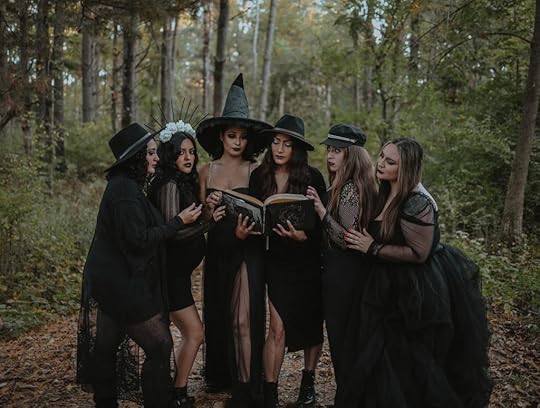
Witches were perceived as evil beings by early Christians in Europe. Witch imagery has appeared throughout history – from women huddling over cauldrons to cackling beings flying through the sky. But where did this idea of a magical woman come from?
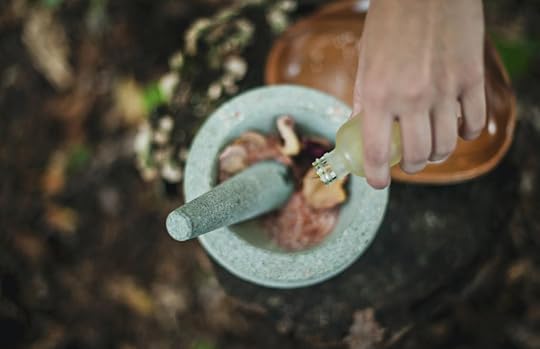
Early witches were thought to be non-Christians or pagans doing the Devil’s work. It is unclear exactly when witches were first introduced into the historical record. One of the earliest records of a witch is actually mentioned in the Bible.
In the book of 1Samuel – written between 931 BC and 721 BC, a passage tells of King Saul seeking the Witch of Endor to summon the dead prophet Samuel’s spirit for guidance. Other stories in the Old Testament condemn witches including Exodus 22:18 which says: “thou shalt not suffer a witch to live.”
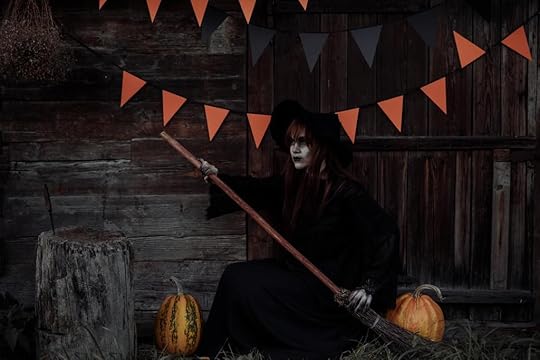
Witch hysteria really took off in Europe in the mid-1400s when may accused witches confessed, often under torture. Within a centruy, witch hunts were common and most were executed by burning or hanging. Single women, widows, and other women on the margins were especially targeted.
This hysteria followed colonists to the New World. A smallpox epidemic and fear of attacks from Indigenous people created a powder keg. This sparked the witch trials that took place in Salem, MA in 1692.
By the time the dust settled, 150 people were accused of witchcraft and 18 were put to death. So what sparked this mass hysteria?

Most witches were natural healers or “wise women” whose choice of profession put them in the line of fire. The past has a long history of punishing women in power. Many of these women had no fault except being experts in their fields. And perhaps not following Christianity.
In the Middle Ages, Christianity quickly became the religion of the land. At the same time Witch hysteria took hold of Europe. These can be seen as going hand in hand. Those who did not convert would be seen as doing the Devil’s work and had to be “taken care of.”
So what explains the documented accusations of witchery seen in the Salem Witch Trails?
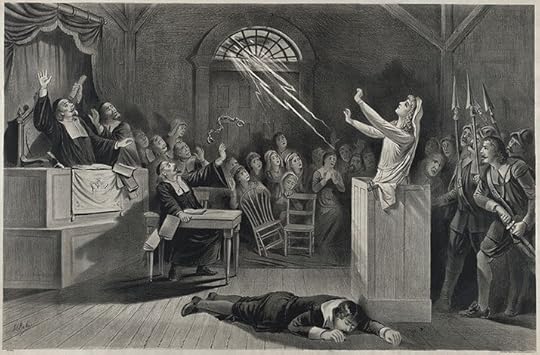
The Salem Witch Trials began when 9-year-old Elizabeth Parris and 11-year-old Abigail Williams began suffereing fits, body contortions, and uncontrolled screaming. More girls began exhibiting symptoms, leading to the first accusations. The enslaved woman – Tituba was the first to be accused and forced to confess of practicing black magic.
However, today historians believe that these hallucinations and fits were caused from a less magical origin. The colonists of Salem were suffering from ergotism or poisoning resulting from fungus growing on their grain.
Ergot poisoning can cause dramatic symptoms including the feeling of your skin crawling, sudden dizziness, hallucinations, paranoia, mania, and delirium. Each of these symptoms match afflicictions caused by the witches in the records from the Salem trials.
Weather patterns from the year prior to the hysteria show that Salem experienced a warm, rainy spring. This would have been prime conditions for fungal growth. As grain is harvested and stored for months, the contaminated grain would not have been eaten until around November. The first accusations were in December 1691 after the consumption of the grain.
The hysteria lasted for approximately one year with the last executions on September 22, 1692. A dry summer that year led to no fungal growth, putting an end to the symptoms and to the trials.
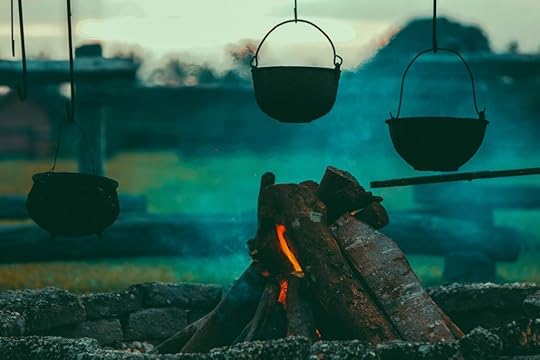
The image we associate with these witches has changed a lot over time. Human healers and poisoned grain would not explain all the imagery. Artist Albrecht Dürer is credited with defining the way we view them today with his series of engravings. He depicted them as young and nubile with the capability to enthrall men but also to turn into a crone, worshipping the horned goat. Dürer stated that his inspiration was Italian artist Andrea Mantegna’s concept of Envy.
Many other artists were inspired by this same piece producing what is considered the golden age of witchcraft imagery – during the 16th and 17th centuries. As a result there was an outpouring of misogynistic witchcraft imagery, with artists taking advatage of the growing technology to quickly disseminate their material. Historians have credited the spreading of witchcraft hysteria with the print revolution. Many of the prints created during this period were powerful color woodcuts that caught the attention of passerby, helping to sell newspapers and pamphlets.
By the 18th century, witches had lost their threatening edge. Instead they were seen more as an archaic superstition. Still artist Goya used them as vehicles for his satire. Goya depicted the women flying around on a broom. The print was titled with the Spanish ‘volar’ meaning to fly, but also used as a slang for having an orgasm. His images were used as a commentary on greed and corruption.
These prints are often credited with solidifying the broom riding images we use today. It is also seen as another way to make a group of women as other. Homosexuality in the 18th Centurity was criminalized with a punishment of death. By fanatics the act was seen as the work of the Devil and those engaging must be “taken care of.”
Most recently, witchcraft has been associated with those practicing Wicca. Since the 1960s, this religion has become more mainstream with more than 1.5 million practicers in the United States, but this does not mean that everyone has moved past their fear of witches. As recently as 2010, people suspected of witchcraft were beaten and killed in Papua New Guinea – including a young woman being burned alive.
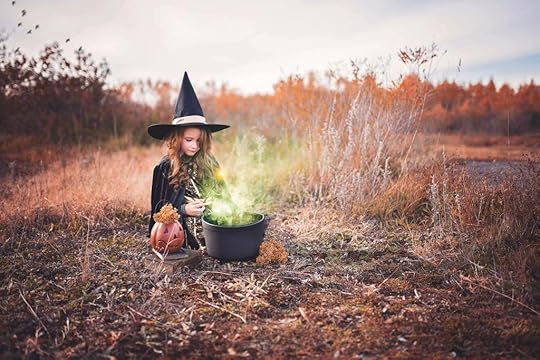
The one constant throughout the history of witchcraft is misogyny. Witches were used as the scapegoats on which the evil of society was – and still is – projected. While the major hysteria during the Puritan Age has passed, there is still a long way to go before witches – real or perceived- will be safe from persecution.
Sources:
Berger, H. (n.d.). What is wicca? an expert on modern witchcraft explains. BrandeisNOW. Retrieved October 8, 2022, from https://www.brandeis.edu/now/2021/september/wicca-berger-conversation.html
History.com Editors. (2017, September 12). History of witches. History.com. Retrieved October 8, 2022, from https://www.history.com/topics/folklore/history-of-witches
Powell, S. D. (2017, November 24). Queer in the age of the queen: Gender and sexuality of the mid modern period in Victorian England and North America. Molly Brown House Museum. Retrieved October 8, 2022, from https://mollybrown.org/queer-in-the-age-of-the-queen-gender-and-sexuality-of-the-mid-modern-period-in-victorian-england-and-north-america/
Questions about Salem Ma Witchcraft: 1692 Salem witch museum. Salem Witch Museum. (2022, September 7). Retrieved October 8, 2022, from https://salemwitchmuseum.com/faqs/#:~:text=The%20Salem%20witch%20trials%20took,the%20first%20arrests%20were%20made.
Smith, T. (2015, May 27). Monsters that were actually sick. Mental Floss. Retrieved October 8, 2022, from https://www.mentalfloss.com/article/64376/call-doctor-not-exorcist-monsters-were-actually-sick?fbclid=IwAR1Oiy5tUBes8T5P9krucnEqs3gWtOenVtycYT6JKiZ_2a4n97ZMM87U5Ww
Sooke, A. (n.d.). Where do witches come from? BBC Culture. Retrieved October 8, 2022, from https://www.bbc.com/culture/article/20140925-where-do-witches-come-from
Young, F. (2020, February 1). The myth of medieval paganism: Francis Young. First Things. Retrieved October 8, 2022, from https://www.firstthings.com/article/2020/02/the-myth-of-medieval-paganism
October 1, 2022
2022 Pop Sugar Reading Challenge- Update!
For the past 8 years, Pop Sugar has put out its annual reading challenge. The challenge provides 40 prompts for finding books to fit (i.e. a book with silverware on the cover). It is up to you to decide how the book fits.It is a great way to connect with other readers and people who love books! This year’s challenge is up! You can find it here.
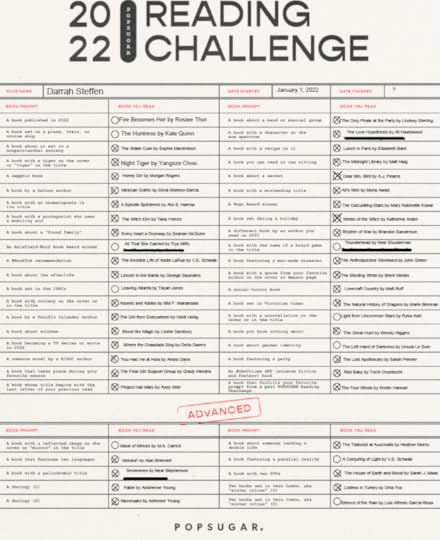
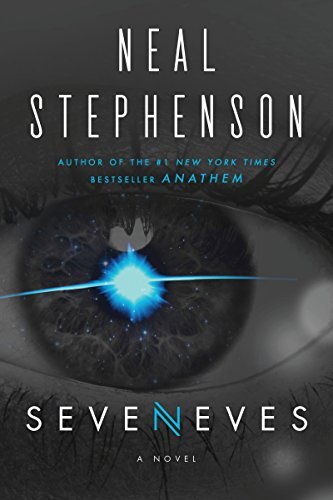
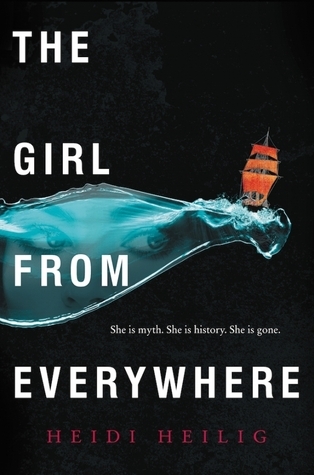
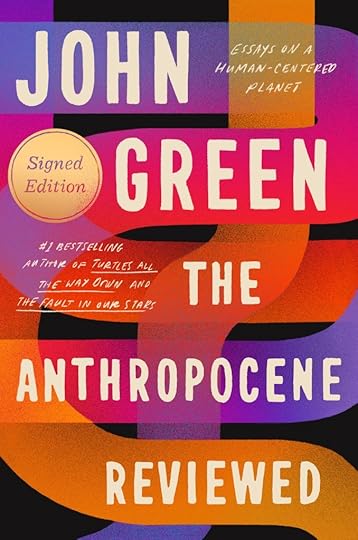
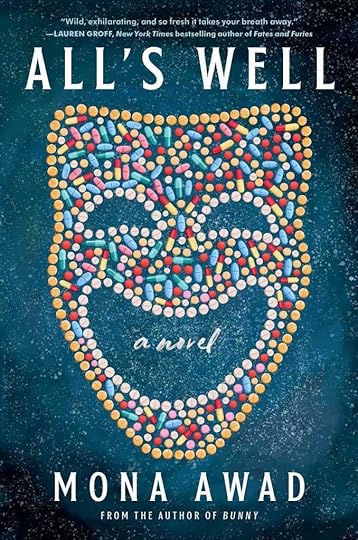
A book with a palindromic title: Seveneves by Neal Stephenson
3 Stars
A catastrophic event renders the earth a ticking time bomb. In a feverish race against the inevitable, nations around the globe band together to devise a plan to ensure the survival of humanity far beyond our atmosphere, in outer space.
A book by a Pacific Islander author: The Girl from Everywhere by Heidi Heilig
4 Stars
Nix has spent her entire life aboard her father’s ship, sailing across time, world, myth, and imagination. But her father’s mission has consumed him, possibly at the cost of Nix’s life.
A book featuring a man-made disaster: The Anthropocene Reviewed by John Green
5 Stars
A collection of personal essays discussing the current geological age, in which human activity has profoundly shaped the planet and biodiversity.
A book with a misleading title: All’s Well by Mona Awad
3 Stars
Miranda’s life is a nightmare. The accident that ended her career has left her with chronic pain and dependence on painkillers. Determined to put on All’s Well That Ends Well, she faces a mutinous cast hellbent on staging Macbeth instead. That is until she meets three strange benefactors, and she realizes the show must go on.
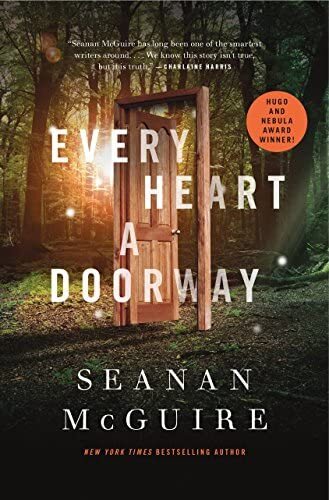
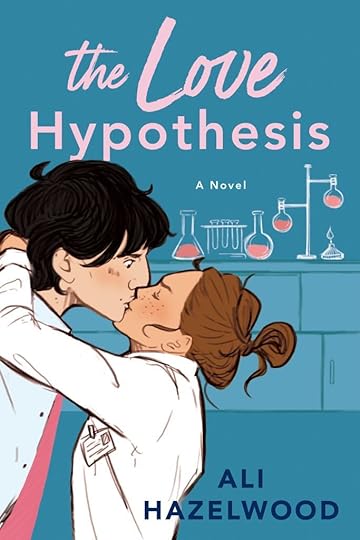
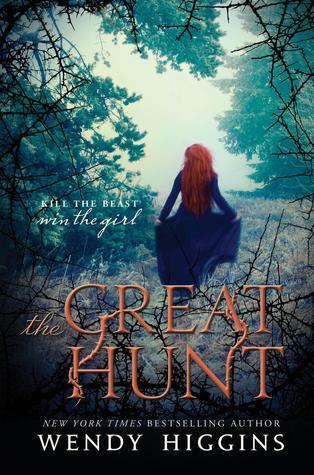

A book about a “found family”: Every Heart a Doorway by Seanan McGuire
3 Stars
Children have always disappeared under the right conditions; slipping through shadows, tumbling down rabbit holes, and emerging somewhere else. What happens to these children when they return?
A book with a character on the ace spectrum: The Love Hypothesis by Ali Hazelwood
4 Stars
Olive Smith doesn’t believe in lasting romantic relationships, but her friend does. Convincing Anh that Olive is dating and well on her way to a happily ever after would require proof, leading her to kiss the first man she sees. None other than Dr. Adam Carlson – hotshot professor and well-known ass.
A book you know nothing about: The Great Hunt by Wendy Higgins
4 Stars
When a strange beast terrorizes the kingdom of Lochlanach, fear stirs a revolt. In an act of desperation, the king declares that the one who kills the creature will win the ultimate prize: his daughter’s hand in marriage. Inspired by the Grimm Brothers’ “The Singing Bone”
A book that features two languages: Moloka’i by Alan Brennert
3 Stars
Set in Hawai’i during the early 1900s, this story follows the life of Rachel Kalama, a Hawaiian girl who dreams of visiting far-off lands. Those dreams are put on hold when she is discovered to have leprosy and is sent to quarantine at Kalaupapa to live out her life.

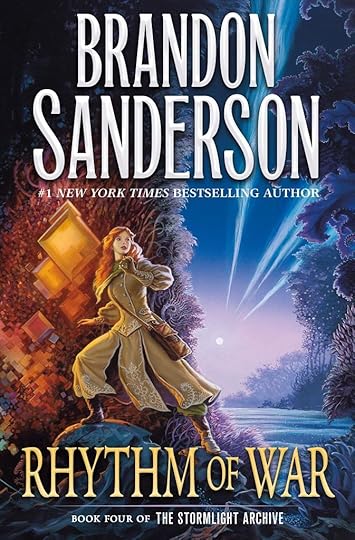
A book about a non-patriarchal society: The Water Cure by Sophie Mackintosh
2 Stars
This dystopic feminist revenge fantasy is about three sisters on an isolated island, raised to fear men. King has staked out for his wife and three daughters. The cult-like rituals and therapies they endure fortify them from the spreading toxicity of a degrading world. But when their father disappears and strange men wash ashore their life is torn upside down.
A different book by an author you read in 2021: Rhythm of War by Brandon Sanderson
4 Stars
Book 4 in the Stormlight Archive. After forming a coalition of human resistance, Dalinar and the Knights Radiant spent a year of fight in a brutal war. Neither side has gained ground and the threat of betrayal by Dalinar’s crafty ally looms over every move.
September 26, 2022
The Chinese Lung
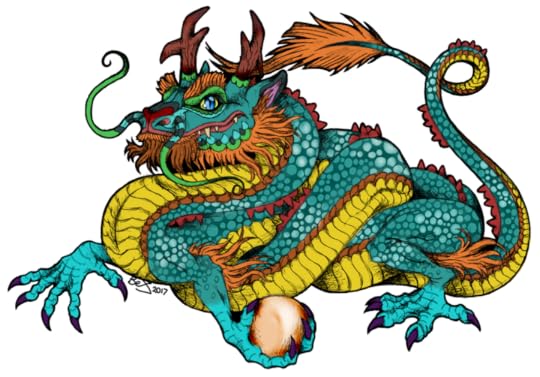
The Chinese dragon or Lung is a legendary creature from Chinese mythology. The most common depiction of these creatures is snake-like with four legs. They traditionally symbolize auspicious powers, particularly over water. The dragon is considered a symbol of power, strength, and good luck for people in East Asian culture.
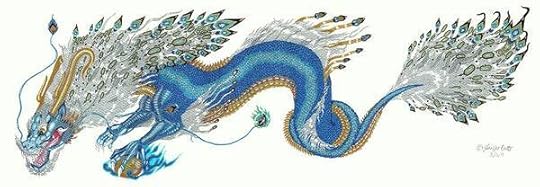
Dragons have been used in ancient Chinese culture since the Xinglongwa culture (6200–5400 BC). It represented the evolution of the ancestors and qi energy. Historically, the Chinese dragon was associated with the Emperor of China and was used as a symbol of imperial power. During the Tang dynasty, Emperors wore robes with the dragon motif. In the Yuan dynasty, the dragon was reserved for the Emperor only. The dragon appeared on the first Chinese national flag during the Qing dynasty.
So what inspired this brilliant creature?
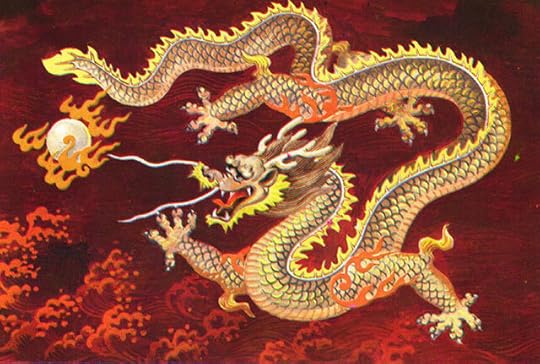
From its origin as totems, the Chinese dragon evolved into a mythical creature. The Han dynasty scholar Wang Fu laid down a full description of the beast:
“People paint the dragon’s shape with a horse’s head and a snake’s tail. Further, there are expressions as ‘three joints’ and ‘nine resemblances’, … They are the following: his antlers resemble those of a stag, his head that of a camel, his eyes those of a demon, his neck that of a snake, his belly that of a clam, his scales those of a carp, his claws those of an eagle, his soles those of a tiger, his ears those of a cow…”
Many historians have determined two possible origins for the Chinese lung.
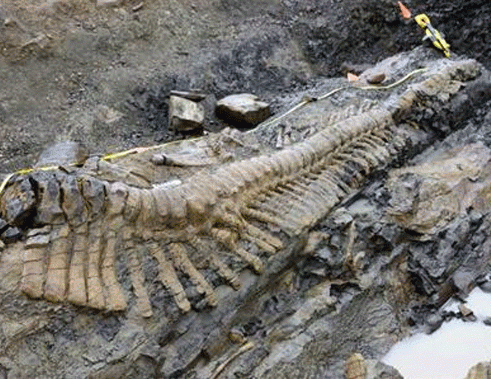 Dinosaur found in China’s Shandong Province in 2010.
Dinosaur found in China’s Shandong Province in 2010.As with many creatures, this myth may have been inspired by finding dinosaur bones throughout the Asian continent. Ancient Chinese documented finding dinosaur bones as far back as 300 BC in the Sichuan Province. These fossils were called dragons and used in traditional medicines.
Today the modern Chinese term for dinosaur is written as 恐龍; 恐龙; kǒnglóng, meaning terror dragon.
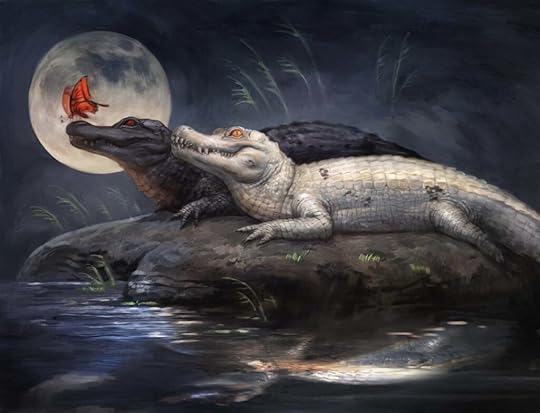
While there is a case to be made for dinosaur bones, some historians believe that it perpetuated the myth. The stories and iconography of dragons have been around for much longer than the records identifying bones in the area. While this does not refute the idea, it may lend credence to an alternative hypothesis.
The Chinese Alligator has been a part of Chinese literature since the third century. In the late 1200s, Marco Polo became the first person outside China to write about the animal. In some such writings, the alligator was associated with the Chinese Lung.
Chinese Alligators or the muddy dragon is a crocodilian endemic to China, still alive today. This animal is related to the American Alligator found in the southern United States.
The Chinese Alligator is often dark gray or black with a fully armored body. It can grow up to 1.5 – 2 m and weigh up to 45 kg. The species is an opportunistic feeder, primarily eating fish and invertebrates. It is considered a vocal species, adults bellowing during mating season and young making noise to communicate to those around them. These alligators can live up to 75 years.
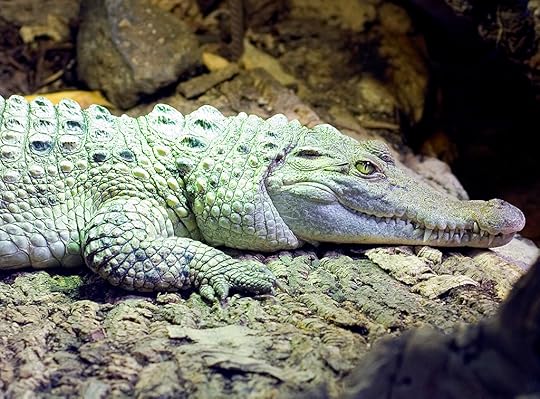
Today the Chinese Alligator lives in fresh water and is restricted to six regions in the province of Anhui, Jiangsu, and Zhejiang. Historically the animal lived across China and possibly even in Japan. However beginning in 5000 B.C., multiple threats such as habitat destruction caused the population to decline.
In the 1970s, the wild population was around 1000. By 2000, it had dropped to 130 animals. The alligator was listed as critically endangered by the International Union for the Conservation of Nature. In 2017, the population had grown to around 300.
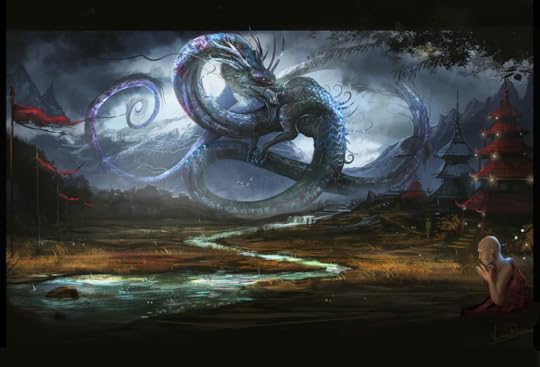
The Chinese Lung has appeared in Chinese iconography for centuries and can still be seen today. While it is up for debate what inspired this myth, we can agree that the myth is enduring.
And if you would like to save the dragons, consider making a donation to the IUCN/SSC Crocodile Specialist Group to help the critically endangered Chinese Alligators.
Sources:
Dinosaur Fossil Unearthed in China. (2013, August 30). Deccan Herald. Retrieved September 22, 2022, from https://www.deccanherald.com/content/354308/dinosaur-fossils-unearthed-china.html.
Drake, E. (n.d.). Asian lung species. Dragonology Wiki. Retrieved September 22, 2022, from https://dragonology.fandom.com/wiki/Category:Asian_Lung_Species
Ingersoll, Ernest; et al. (2013). The Illustrated Book of Dragons and Dragon Lore. Chiang Mai: Cognoscenti Books.
IUCNCSG. (n.d.). Chinese Alligator. Iucncsg.org. Retrieved September 22, 2022, from http://www.iucncsg.org/
Kang, A. (n.d.). Wildlife Chinese alligator. WCS China. Retrieved September 22, 2022, from https://china.wcs.org/Wildlife/Chinese-Alligator.aspx
Mana, D. (2013, August 28). Dragon Bones. Karavansara. Retrieved September 22, 2022, from https://karavansara.live/2013/04/23/dragon-bones/
Meccarelli, Marco (2021). “Discovering the Long: Current Theories and Trends in Research on the Chinese Dragon”. Frontiers of History in China. 16 (1): 123–142.
September 24, 2022
Hunt for a Hero
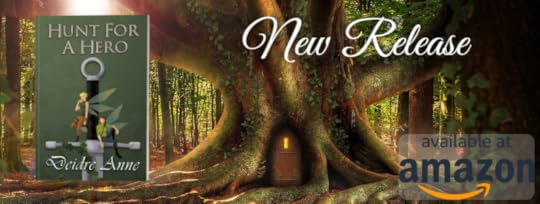
Hunt for a Hero
Clover Chronicles Book 1
Dread… The feeling overwhelmed the Fairy sisters at the sight of the empty clover fields.
Sworn protectors of the clover and the magic it produced for the MayGrace Kingdom, Cecilly and Josolyn, had no idea what existed beyond the fields of their home. Now, with no time to spare, the sister must find a Hero, locate the stolen clover, and return it to its native soil. If they fail, the clover withers and dies, killing the Kingdom’s magic, the one source of keeping its enemies at bay.
Can they find the Hero they Hunt, or will fate force them to become Heroes themselves?
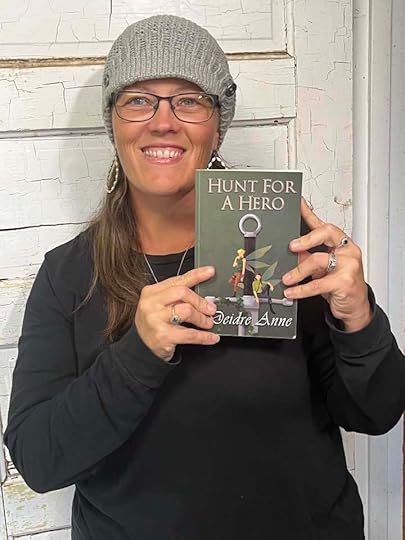
This is the debut novel by Deirdre Anne. She lives in rural North Dakota with her husband, three cowboys, and little lady. Deidre has been losing herself within the pages of books since her childhood. Discovering a desire to create her own heros and stories, she began writing books in several genres including young adult fantasy and romance. Deirdre Anne is a member of the BisMan Writers Guild.
Buy nowSeptember 22, 2022
Paperback Now Available!

If you were waiting to buy a physical copy of this book, it is out now in both paperback and hardcover formats from all Amazon stores except India (tbd).
And I’m totally blown away that this book is maintaining a 4.9 star average rating on Amazon. Considering there are 40 reviews on the US site, this is AMAZING 
Available here: https://books2read.com/b/ChildrenOfWarAnthology
September 12, 2022
Elves
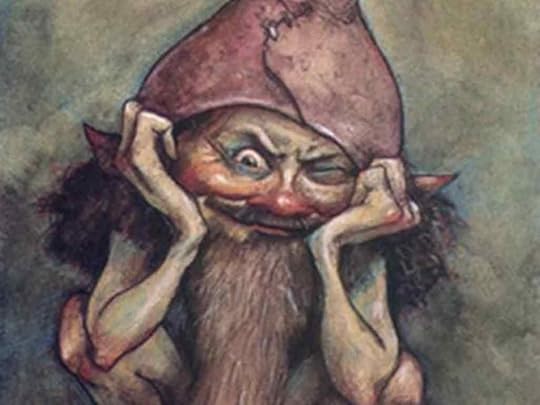
An elf is a being originating in Germanic mythology. The elves were originally thought of as a race of divine beings endowed with magical powers for both the benefit and injury of mankind. Their appearance and characteristics have changed greatly over their telling. So what inspired these myths?

The word elf is found throughout the Germanic languages and seems to have originally meant “white being.” This origin can be traced back mainly through text of Christians written in Old and Middle English, midieval German, and Old Norse. The texts associate elves with gods of nose mythology. It is unclear if the “white being” means the coloration of skin or an auroa of light surrounding their divinity. Either way, it has long kept Elven mythology from having any diversity. Especially in modern times.
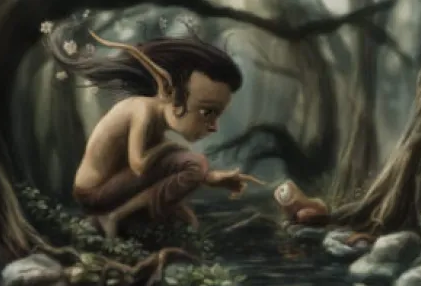
In early and modern folklore, they became associated with fairies of Romance folklore and assumed a diminutive size, often living in forests, underground, or in springs. They were often depicted as very young.
In the 19th-century, Romanticism attempted to restore them to full stature making them men and women of great beauty. It was this movement that prompted J.R.R. Tolkien to include this version of elves in his Lord of the Rings, cementing the image.
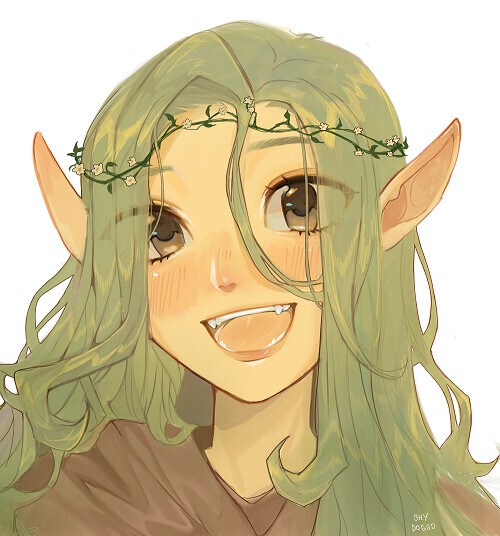
Pre-Tolkien Elves were thought to be friendly. They were highly musical and had distinct facial features with high cheekbones and upturned noses. Elves were also known for their keen wit and charm.
Post-Tolkien Elves were thought to be highborn and aloof. They still held onto their musical talent and showed more classical beauty characteristics. They also took on unsurpassed fighting abilities and long lives.
So inspired this enduring myth?
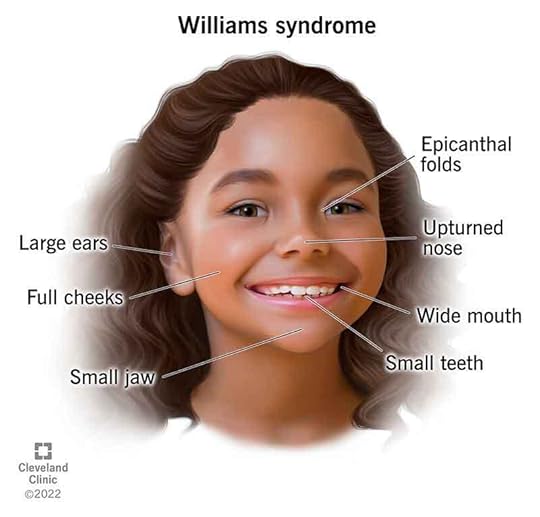
Many folklorists believe that people affected by Williams Syndrome were the inspiration for the stories of Elves.
Williams Syndrome is a rare genetic disorder characterized by mild to moderate delays in cognitive development, a distinctive facial appearence, and a unique personality that combines over-friendliness with high levels of empathy and anxiety. This disorder is caused by a partial deletion of up to 28 genes of chromosome 7. These genes are involved in the production of elastin.
Elastin is a protein that provides elasticity and suppleness to structures such as the skin and blood vessel walls. The lack of elastin provides the distinct features. This condition is not an inherited trait and is not associted with lack of prenatal care.
The disorder affects one in every 10,000 people, producing unique symptoms. Most affected by Williams Syndrome are extremely outgoing and friendly. Despite the learning disabilities, they are talkative, witty, and charming. Many are considered musical savants. The disorder can more commonly be identified by the upturned noses, high cheekbones, wide smiles, and pointed chins.

Folklorists also believe that people with Williams may have bee in demand as court jesters during the European Renaissance. Their musicality, good humor, and eagerness to please would have made them popular entertainers.
Historian Suzannah Lipscomb states that many – if not all – jesters of England’s Tudor period were people with learning disabilities. These roles were exploitative, but also a place of privilege. For example, Henry VIII’s jester Will Somers was intellectually disabled, but Henry paid a caretaker to look after him and provide him with fine clothing and food.
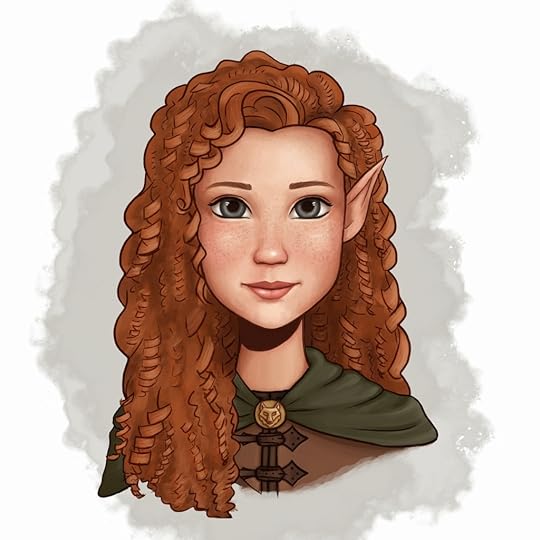
It is very likely that Williams Syndrome – which was not identified until the 1960’s – was the origin for the myths of Elves in its earliest form. Over time, as we have passed the stories down, the myth has changed and grown. We can see how this one has evolved especially through the Romantic period and past the publication of Lord of the Rings.
We still see it growing and evolving today with the latest installment of LOTR’s Rings of Power. The creators of the show opted for colorblind casting. This has led to people of color playing Elves in the show, creating much controversy.
People across the internet have decried the casting of Arondir because it wasn’t true to Tolkien’s vision. Tolkien has been unable to comment – since he died in 1973. This harkens back to the origin of the word meaning “white being.” It is true that Elves were originally depicted as white. The myth originated in predominately white cultures (Germanic and Nordic).
However, stories are meant to change. Tolkien changed many things about the Elven mythology – including the spelling of the word (Elfin to Elven). The stories of Elves will continue to grow and change. I’m excited to see where we land in the future.
Sources:
Albizu73. (2021, October 17). Elves, the not so hidden people of Fantasy. Speculative Tertulia. Retrieved September 10, 2022, from https://ingmaralbizu.com/elves-the-not-so-hidden-people-of-fantasy/
Hall, Alaric (2007). Elves in Anglo-Saxon England: Matters of Belief, Health, Gender and Identity. Boydell Press.
Jakobsson, Ármann (2015). “Beware of the Elf! A Note on the Evolving Meaning of Álfar“. Folklore. 126 (2): 215–223.
Latson, J. (2017, June 20). Williams syndrome and possible origins of Centures-old myths. Time. Retrieved September 10, 2022, from https://time.com/4823574/mythology-williams-syndrome/?fbclid=IwAR24EITWtl32fJJSItXaae2lpJWzo2otBCsfkB5Notn0Iw_Sp28W9Q9TTrk
Stinson, K. (2022, September 9). Why is the casting for ‘the rings of power’ causing controversy? Distractify. Retrieved September 10, 2022, from https://www.distractify.com/p/rings-of-power-controversy
U.S. Department of Health and Human Services. (n.d.). Williams syndrome. National Institute of Neurological Disorders and Stroke. Retrieved September 10, 2022, from https://www.ninds.nih.gov/health-information/disorders/williams-syndrome#:~:text=Publications-,Definition,levels%20of%20empathy%20with%20anxiety.
Williams syndrome. Williams syndrome – Better Health Channel. (n.d.). Retrieved September 10, 2022, from https://www.betterhealth.vic.gov.au/health/conditionsandtreatments/williams-syndrome
August 29, 2022
The Banshee

A banshee is a female spirit in Irish folklore who heralds the death of a family member, usually by screaming, wailing, shrieking, or keening. Her name is connected to the burial mounds found across the Irish countryside.
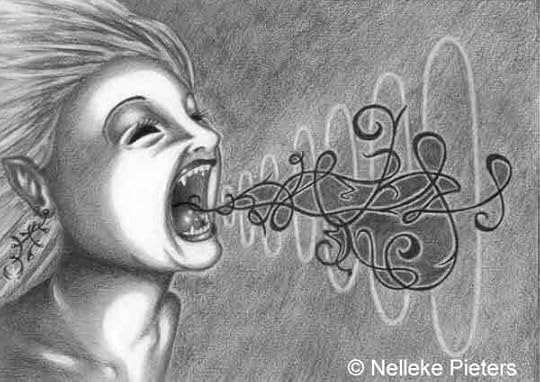
The banshee is sometimes described as having long, streaming hair and wearing a grey cloak over a green dress. Her eyes tend to be red from continual weeping. She has a ghastly complexion. Sometimes the banshee assumes the form of some sweet virgin who died young. She was granted the power to foretell the death of her kin. Other times she is seen as a shrouded elderly woman, crouched beneath the trees. According to legend, if she was spotted, she would vanish into the dark with a noise similar to a flap of bird wings.
The word banshee comes from the Old Irish phrase “ben síde” meaning woman of the fairy mound. The fairy mounds known as the síde are the raised burial mounds where these spirits are supposed to originate. But what inspired these wailing women?
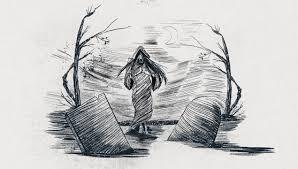
First accounts of the creature date back to the 1380s. She was seen as a predictor of death and would often appear before someone entered a situation where it was unlikely they would survive. Tales were told of battles being abandoned after hearing the wailing in the woods. As fleeing soldiers were killed by enemies or for desertion the legend of the banshee grew.
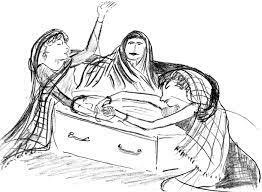
Some historians believe the legend of the banshee grew from the mourning tradition of the keening. The keening was a vocal ritual artform, performed at the wake or graveside in mourning of the dead. Keens were said to have contained raw unearthly emotion, spontaneous words, repeated motifs, crying, and elements of a song. Some women were so talented at the art form that they were paid to attend the funeral rites. These women were generally experienced and elderly sent to help the deceased soul leave the body. You can learn more about keening here.

Other historians believe that the story of the banshee was inspired and perpetuated by the Barn Owls found throughout Ireland. The Barn Owl (Tyto alba) is native to Ireland and is rarely seen as a nocturnal hunter. The animal has a ghostly white facial disk, front-facing black eyes, and is known for its silent flight.
Like other nocturnal animals, it has excellent night vision. Owls with dark brown or black eyes are night hunters. These dark eyes help them blend into the darkness rather than help them see in the dark. Unlike mammals (such as bears), owls lack a tapetum lucidum, which enhances the amount of light absorbed by the photoreceptors in their eyes. Still, when light catches their eyes glow dark orange or red.
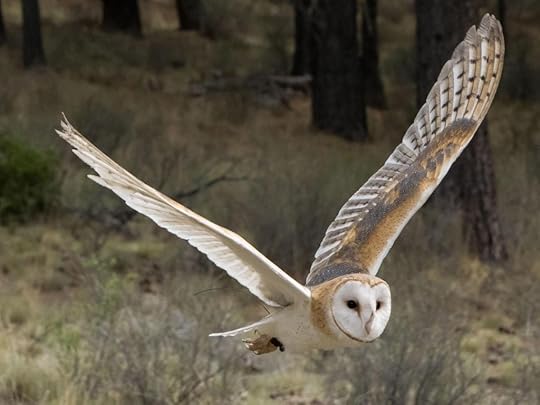
Barn owls are known for their cry which sounds like a woman screaming. Play the video below to hear their call.
Barn owls used to be common across Ireland, but populations in recent decades have declined. Its home range is now restricted to the Southwest and Midlands. The populace has declined by over 50% in the past 25 years with around 450 breeding pairs. The main driver of population decline is the loss of habitat in favor of agriculture. The use of pesticides is also a major concern as it can affect the animals the birds prey on.
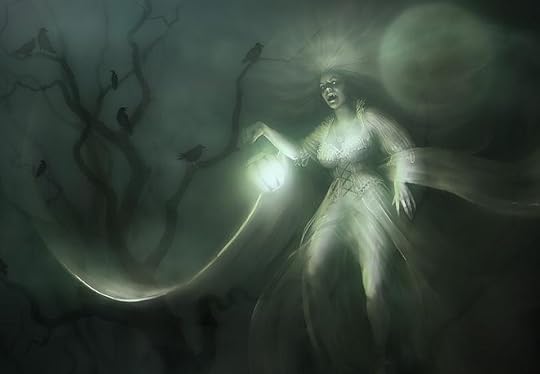
Like with most things, the truth is probably somewhere in the middle. The inspiration for the Banshee probably came from the Keening woman and then was perpetuated by Barn Owl sitings. The myth took on traits from both origins to become the portent of death we know today.
Sources:
Bartlett, Thomas. A Military History of Ireland. p.37
Brent, H. (2021, August 19). Exploring Irish mythology: The banshee. The Irish Post. Retrieved August 28, 2022, from https://www.irishpost.com/life-style/exploring-irish-mythology-banshee-170287?fbclid=IwAR285Z6FQi0ZMpumapo6LRpUj9AwKZsY3hZil0IEQd2uArB_agVxhedGM4M
Briggs, Katharine (1976). An Encyclopedia of Fairies. Pantheon Books. pp. 14–16.
Banshees: Irish folklore or fact? Ghost City Tours. (n.d.). Retrieved August 28, 2022, from https://ghostcitytours.com/ghost-stories/irish-ghost-stories/banshees/
Encyclopædia Britannica, inc. (n.d.). Banshee. Encyclopædia Britannica. Retrieved August 28, 2022, from https://www.britannica.com/topic/banshee
Forsyth, S. (n.d.). Home. Celtic Wedding Bands & Engagement Rings. Retrieved August 28, 2022, from https://www.celtic-weddingrings.com/celtic-mythology/legend-of-the-banshee?fbclid=IwAR1nyw-6p1vKxrVJJK90BWrtUd9xrsFCvNK-Pmgt_fNtVxWfBxLBzUcNydU#:~:text=Historians%20have%20traced%20the%20first,song%20to%20lament%20someone%27s%20death
Hewitt, R., says:, J. L., says:, R. H., & Says:, J. T. (2021, April 15). Owl’s eye color, what does it mean? intoBirds. Retrieved August 28, 2022, from https://intobirds.com/owls-eye-color-what-does-it-mean/
James, J. (2022, June 15). Identifying animal eyes at night: With eye shine chart. Survival Freedom. Retrieved August 28, 2022, from https://survivalfreedom.com/identifying-animal-eyes-at-night-with-eye-shine-chart/#:~:text=This%20phenomenon%20is%20also%20known,causes%20the%20eyes%20to%20glow.
The keening wake. Keening Tradition : The Keening Wake. (n.d.). Retrieved August 28, 2022, from http://www.keeningwake.com/keening-tradition/#:~:text=Keening%20was%20a%20vocal%20ritual,Gaelic%20caoineadh%20meaning%20%E2%9Ccrying%E2%9D.
Native species series – the barn owl. Fota Wildlife Park. (n.d.). Retrieved August 28, 2022, from https://www.fotawildlife.ie/news/native-species-series-the-barn-owl/#:~:text=The%20mysterious%20Barn%20owl%20(Tyto,it%20its%20sense%20of%20mystery.
O’Hara, K. (2022, May 26). The banshee: Origin + what it sounds like (2022). The Irish Road Trip. Retrieved August 28, 2022, from https://www.theirishroadtrip.com/the-banshee/?fbclid=IwAR3lVPK5HWb4v5JqSEtbb8dJ3P5l3pRqmfjnKC-WpWbZDHmDZi6cksOiajU
T., Koch, John (1 January 2006). Celtic culture: a historical encyclopedia. ABC CLIO. p. 189.
August 24, 2022
Release Day for Children of War!

A future torn apart by war…
Adolescence lost to battle…
What becomes of those who lose their childhood to armed conflict?
In this anthology, a diverse group of authors from around the globe bring you a multi-genre collection of short stories about children trapped in war. Includes literary fiction, fantasy, historical fiction, and memoir.
In diverse settings of fantasy worlds, Ancient Greece or India and even historical and modern-day Ukraine, explore the lives of children touched by warfare. Some go searching for healing, others are forced to walk in the darkness of guilt and remorse. Each story provides a glimpse of both the horrors witnessed and the potential for redemption. Through the lens of trauma, the authors of this anthology provide not only rays of hope but also powerful messages and much food for thought.
The stories in this collection have been crafted to honor those affected by the Russia-Ukraine conflict and support their healing in the future. No one’s potential should be crippled because of trauma inflicted during their most impressionable years. And yet an entire generation of Ukrainians is threatened with just this outcome.
All proceeds of this anthology will be donated in perpetuity to Voices of Children Foundation in Ukraine or another similar charity.
Stories include:
Through Vira’s Eyes by MJ Krause Chivers
Not Dead, Just Sleeping by Darrah Steffen
A Child of Minidoka by Joan T. Seko
Jonah by C. Borden
The Prince and the Flute Player by C. Phillip
The Tarnished Key by Susan Stradiotto
A Mermaid’s Tears by J.C. Seal
The Dragon’s Demise by Daan Katz
The War Legacy by Nandita Pant Joshi
A Vampire’s Heart by I. Vélez
The Curse of Blood by Lauren Lee Merewether
Child of Destruction by Astrid V.J., USA Today Bestselling author
Through the Eyes of a Child by Pam Floyd
The Borrowed Life by Elena Shelest
The cover for this anthology was donated by Pallabi Pattanaik as a contribution toward this project.
This anthology includes illustrations by Ukrainian-American author-artist Elena Shelest.
Content Warning:
Due to the nature of the subject matter explored in this anthology, this book is not suitable for sensitive readers with past experiences of trauma. The authors have not shied away from the atrocities committed during wartime and how that affects children because we wanted to honor the experiences of this most vulnerable of population groups whose trauma is often brushed under the carpet by the adults playing war games. This anthology is suitable for stable individuals 16+ who are willing to step out of their comfort zones to glimpse what is known about how children are affected by violent conflict, whether they are forced to flee their homes, witness atrocities, suffer injuries or lose loved ones.
Specific content warnings are included with the stories that are most likely to trigger a sensitive reader. These are mentions of suicide or suicidal thoughts: A Mermaid’s Tears, The Curse of Blood, and The War Legacy; physical violence and torture as well as mention of sexual assault: The Dragon’s Demise; emotional violence: Child of Destruction. Each of these stories includes an individually tailored, detailed content warning.
August 19, 2022
The Art from “Children of War”

We decided to separate this anthology into themes to better combine the multi-genre nature of the stories as well as to provide some insight into the facts of life for children who find themselves trapped in war. Ukrainian-American artist Elena Shelest created some amazing illustrations that we’ve combined with these fact pages to bring you this really beautiful book.
You can check out more of Elena Shelest’s artwork here. Pre-order your copy of Children of War here.
Theme 1: Ukraine. Current statistics about Ukrainian children in the war as of August 10:
Killed: 361
Injured: 705
Disappeared: 204
Stats from: https://childrenofwar.gov.ua/
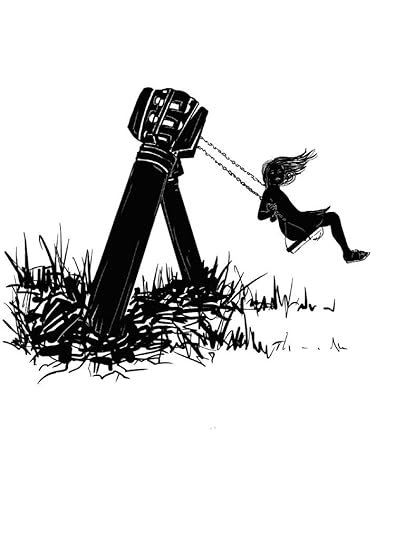
Theme 2:
At highest risk of grave violations during wartime are refugee, internally displaced, and indigenous children.
~ UNICEF: 25 Years of Children in Armed Conflict
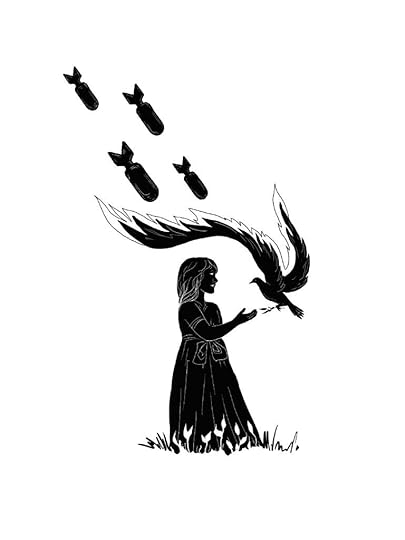
Theme 3: Minidoka
Since Author Joan Seko was actually at Minidoka camp during her childhood and shares her experiences in her short story “A Child of Minidoka”, we wanted to include the facts related to this WW2 camp in the US:
120 000 people of Japanese decent were put into camps in the United States during WWII. 13 000 of them ended up in Minidoka, and half of these were children and infants. https://www.pbs.org/childofcamp/history/
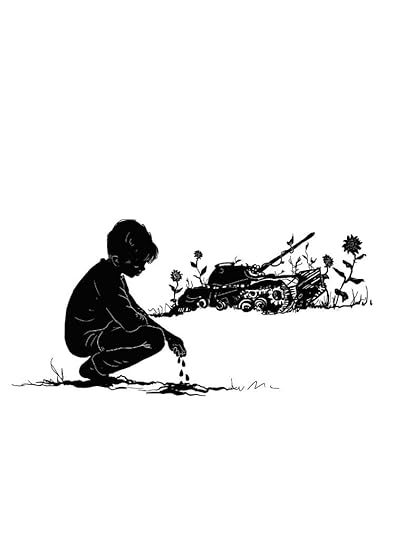
Theme 4: Killing and maiming
Since 2005, over 104 100 children have been verified killed or maimed in situations of armed conflict. ~ UNICEF: 25 Years of Children in Armed Conflict
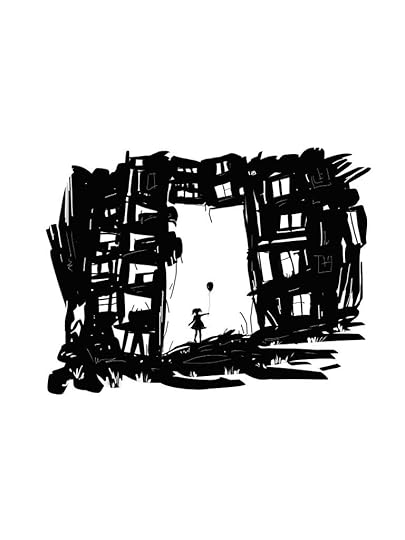
Theme 5: denial of humanitarian assistance
The United Nations verified no fewer than 14,900 incidents of denial of humanitarian access for children since 2005, including among others, killings of and violence and threats against humanitarian personnel, targeted attacks against humanitarian facilities, looting of life-saving supplies, and onerous physical and administrative barriers.
~ UNICEF: 25 Years of Children in Armed Conflict
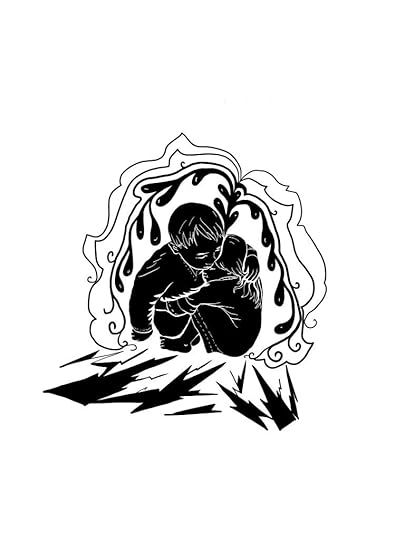
Theme 6: Post Traumatic Stress
All children experienced war trauma and many had psychological consequences. The highest prevalence of PTSD, often comorbid with depression, was found among children who lost one or both parents. The children with the lowest rate of psychological disturbances were those living with both parents. ~ Psychological Disturbances of War-traumatized Children from Different Foster and Family Settings in Bosnia and Herzegovina
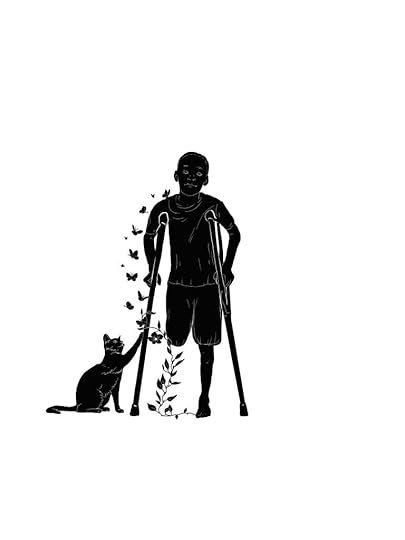
Theme 7: sexual violence against children
Since 2005, more than 14 200 children have been raped or otherwise experienced sexual violence. “Conflict-related sexual violence remains one of the most disturbing violation of children’s rights and has often been used as a tactic of war.” ~ UNICEF: 25 Years of Children in Armed Conflict
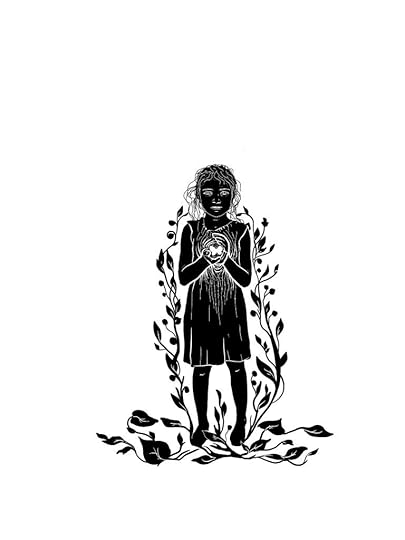
Theme 8: recruitment and use of children in warfare
Since 2005, over 93 000 children have been recruited and used globally by parties to violent conflict. ~ UNICEF: 25 Years of Children in Armed Conflict
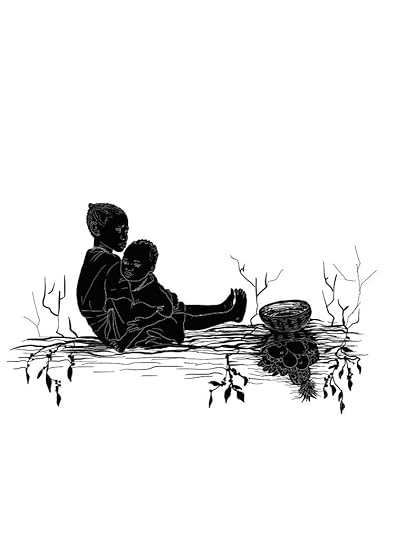
Theme 9: More Ukraine stats
as of 11 August, 2022:
2.3 million children have fled Ukraine. Most with their parents.
240 000 children have been deported to Russia (https://voices.org.ua/en/)
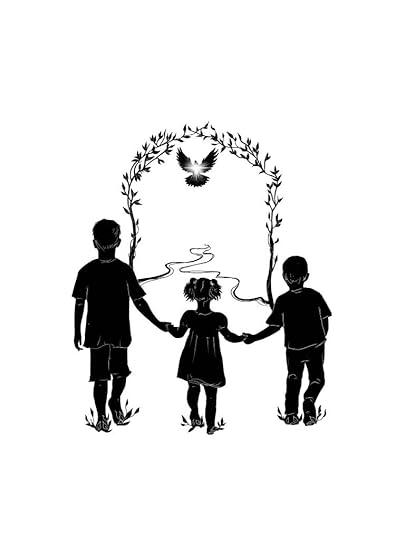
August 1, 2022
Vodyanyk
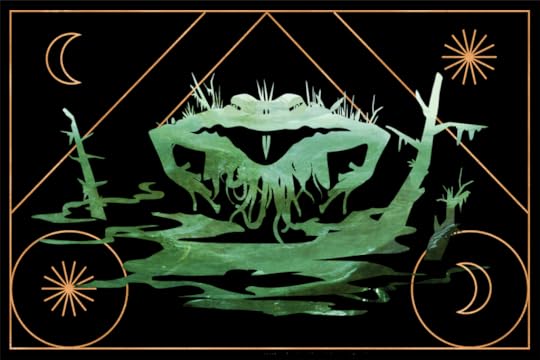
The Vodyanyk or vodyanoy is a water spirit in Ukrainian and Slovak mythology. It is considered to be the equivalent of the German nix.
This creature appears as a naked old man with a frog-like face, greenish beard, and long hair. His body is covered in scales and algae. The creature has a fish tale and webbed feet and eyes that burn like coals. Due to his wrinkled appearance, he is often called “Grandfather” by locals.
When angered, the Vodyanyk breaks dams, washes down mills, and drowns people and animals. He even drags people underwater to serve him as slaves.
So what inspired this interesting creature?
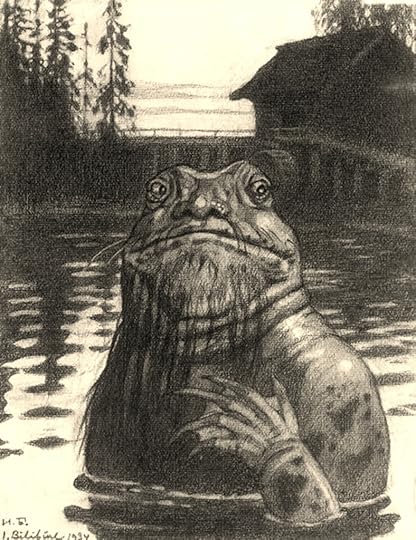
In Czech and Slovak folklore, the features of the creature are different from the Eastern Slavic conception. He is considered more human with gills and webbed fingers and wears strange clothing. In these stories, they can be either good or evil and can be appeased by gifts. For example, fishermen would sprinkle tobacco over the surface of the water in exchange for a better catch.
There are few different origins for the stories of the Vodyanyk. It is said the creature emerges from the souls of wicked people who are denied entry into heaven. Some historians believe that the creature emerged from the people’s fear of death and the afterlife. It became a boogeyman story for those who lived a bad life.
Other historians point to a more tangible explanation for the origins of the Vodyanyk.
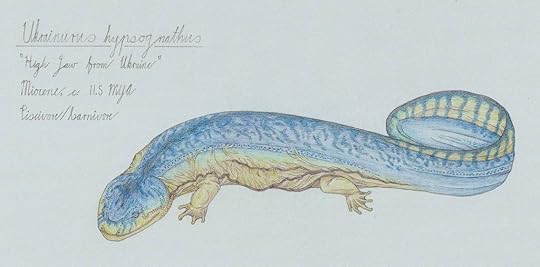
Ukrainurus hypsognathus is an extinct species of giant salamander related to those found in Asia, modern day Russia, and the United States. The group are considered primitive salamanders due to their features and some species are considered fully aquatic.
Like the modern Japanese Salamander – which the Kappa is based on – Ukrainurus could grow to lengths of around 1.5 m. It lived in the Miocene (around 11.5 million years ago).. The remains of this animal was found in an abandoned quarry near the village of Grytsiv in western Ukraine in 2013.
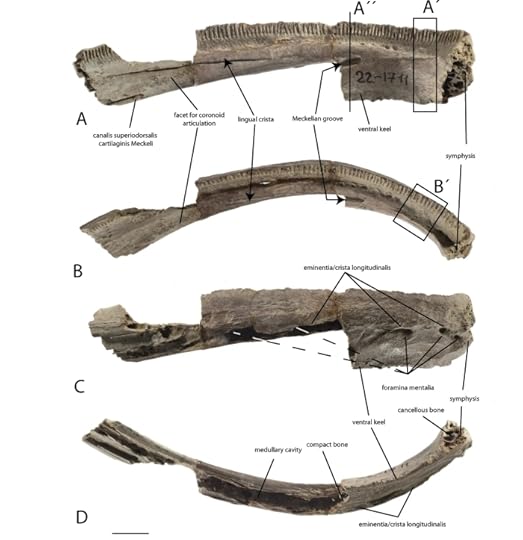 The holotype dentary of Ukrainurus hypsognathus shown in A, lingual; B, dorsal; C, labial; D, ventral views. Scale bar = 1 cm. Image from Vasilyan et al. 2013.
The holotype dentary of Ukrainurus hypsognathus shown in A, lingual; B, dorsal; C, labial; D, ventral views. Scale bar = 1 cm. Image from Vasilyan et al. 2013.This creature would have had a strong bite force, which would have been used to prey on fish, frogs, and other salamanders. Though Ukrainurus may have been less flexible than modern salamanders.
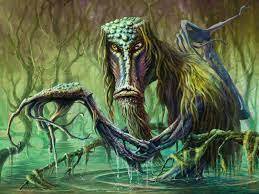
Like the Kappa, Vodyanyk share many features with giant salamanders. They have the frog face, aquatic lifestyle, and a penchant for drowning prey. It is possible that these giant salamanders inspired both of these myths. And the fear of mortality helped perpetuate the stories.
Sources:
Cryptobranchoidea. Wikiwand. (n.d.). Retrieved July 28, 2022, from https://www.wikiwand.com/en/Pancryptobrancha
Heying, H. (n.d.). Cryptobranchidae (giant salamanders, Hellbenders). Animal Diversity Web. Retrieved July 28, 2022, from https://animaldiversity.org/site/accounts/information/Cryptobranchidae.html
Horton, K. (2021, June 10). The proud, demanding Vodyanoy Rules Russia’s rivers and Lakes. Atlas Obscura. Retrieved July 28, 2022, from https://www.atlasobscura.com/articles/monster-mythology-vodyanoy
Vasilyan, D., Böhme, M., Chkhikvadze, V. M., Semenov, Y. A., & Joyce, W. G. (2013). A new giant salamander (Urodela, Pancryptobrancha) from the miocene of Eastern Europe (Grytsiv, Ukraine). Journal of Vertebrate Paleontology, 33(2), 301–318. https://doi.org/10.1080/02724634.2013.722151



